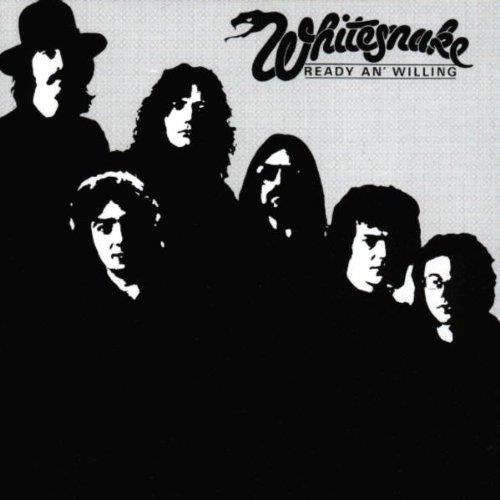
by Alexandra Mrozowska
– Senior Columnist —
 For Whitesnake, 2014 was a year marked by yet another personal changes as well as the release of Live In 1984: Back To The Bone album. February 2015 was announced to be a month of another big news in the band’s camp, leading to various speculations what’s the nature of the upcoming announcement. What could it be, a string of tour dates or perhaps a follow-up to the 2011’s Forevermore…? Both, it turned out, as David Coverdale and his sidekicks revealed The Purple Album – an upcoming re-recording of Mark III and IV Deep Purple classics to be released in May via Frontiers Records and followed by promotional tour. Reactions to the announcement were extremely varied. Some Purple/Whitesnake fans naturally looked forward to hearing revamped and updated versions of the old Deep Purple recordings. Others were pretty skeptical about Coverdale’s voice not up to 1970s standards anymore or the whole idea being an attempt to mess with perfection. Whatever is the result – and whatever was the reason for releasing this ‘tribute’ album of sorts – it’s a clear sign David Coverdale has come full circle as an artist, back to his beginnings and his shelved Purple persona. And this fact alone is a good reason to take a look back onto how the ex-Purple frontman morphed into a big-haired MTV favorite only to go back to where he started at. Those willing to do it are recommended to grab a copy of a book written by the impeccable rock scribe Martin Popoff and out via Soundcheck Books. Aptly entitled Sail Away: Whitesnake’s Fantastic Voyage, it’s a unique account of the eponymous journey across sometimes very turbulent seas.
For Whitesnake, 2014 was a year marked by yet another personal changes as well as the release of Live In 1984: Back To The Bone album. February 2015 was announced to be a month of another big news in the band’s camp, leading to various speculations what’s the nature of the upcoming announcement. What could it be, a string of tour dates or perhaps a follow-up to the 2011’s Forevermore…? Both, it turned out, as David Coverdale and his sidekicks revealed The Purple Album – an upcoming re-recording of Mark III and IV Deep Purple classics to be released in May via Frontiers Records and followed by promotional tour. Reactions to the announcement were extremely varied. Some Purple/Whitesnake fans naturally looked forward to hearing revamped and updated versions of the old Deep Purple recordings. Others were pretty skeptical about Coverdale’s voice not up to 1970s standards anymore or the whole idea being an attempt to mess with perfection. Whatever is the result – and whatever was the reason for releasing this ‘tribute’ album of sorts – it’s a clear sign David Coverdale has come full circle as an artist, back to his beginnings and his shelved Purple persona. And this fact alone is a good reason to take a look back onto how the ex-Purple frontman morphed into a big-haired MTV favorite only to go back to where he started at. Those willing to do it are recommended to grab a copy of a book written by the impeccable rock scribe Martin Popoff and out via Soundcheck Books. Aptly entitled Sail Away: Whitesnake’s Fantastic Voyage, it’s a unique account of the eponymous journey across sometimes very turbulent seas.
The book is divided into the eleven chapters plus an epilogue and a selected discography. It starts with the “Early Years” chapter, devoted to Coverdale’s artistic life until Deep Purple split back in 1976, and follows the charismatic frontman through his brief solo career and the foundation, development and demise of Whitesnake. An epilogue tells post-Slip Of The Tongue story up to date, from Coverdale/Page collaboration and Restless Heart album to the mid-2000s Whitesnake rebirth that resulted in Good To Be Bad and Forevermore. Sail Away focuses mostly on the artistic and performative aspect of Coverdale’s persona, his private life somewhere in the background and to be revealed mostly via his own quotations. It thus has Popoff not searching for cheap sensationalism, but – as one of the best rock writers ever – focusing on music rather than anything else.
It’s music that calls the tune here indeed. Quotations of ex-Whitesnake musicians show it particularly well, as they focus mostly on what their contribution to the band was in musical, not personal terms. Also each album’s content is analyzed in detail, the lengthy authorial reviews juxtaposed with quotations from other scribes’ write-ups. Even album artwork is an issue to be dwelled upon here – sometimes even with a personal twist, as the author recalls having reproduced Lovehunter album cover on his Maths book. But apart from it and an insight into the songwriting and recording process of the particular band albums it also describes how the band itself was changing. Guided by Popoff, a reader travels back in time so as to witness Whitesnake’s early days dominated by laid-back approach, equality and camaraderie, so unlike the latter-day incarnation of the band, a one-man band so to speak. The book therefore traces not only the long way the band’s been through musically. It also shows how much of Whitesnake has always been David Coverdale in particular periods of the band’s activity. It’s full of line-up changes, conflicts and breakups and dramatic shifts in musical as well as visual sphere. It’s also a vivid, possibly authentic portrait of the rock hero, an insight into Coverdale’s psyche as the determined, devoted but sometimes self-conceited band leader. With numerous quotations from the man himself as well as people who surrounded him, a reader may try to understand the personality behind the (un)ordinary Saltburn-by-the-Sea lad who graces the book cover, his inseparable mic stand in hand.
But besides David Coverdale and his “fantastic voyage” that’s made the backbone of the story, there are many other interesting voices that contribute to it, these of musicians that contributed to the brand of rock called Whitesnake. Each of them not only describe their own venture under Coverdale’s flag. They also share more general comments on musical experience, creativity or songwriting approach that’s made them valuable addition to Whitesnake and secured them a place in the band’s history. From the insightful commentary of Ian Paice to Steve Vai’s musings on his collaboration with Frank Zappa, a reader gets to know almost all parts involved. Sail Away is therefore a juxtaposition of many different – sometimes even contradictory – perspectives on all things Whitesnake, first and foremost for the sake of authenticity. However, apart from that, the author’s multidimensional approach also includes all the acts related to Coverdale’s band in this way or another. The super-group quality to Blue Murder, the early Whitesnake spin-off named The Company Of Snakes or the recent endeavors of Vandenberg’s MoonKings and Bernie Marsden… No act of notable reference to the main story is omitted here, what results in giving a reader much broader perspective and more detailed insight into the story of rock music from 1970s to date.
Also, Sail Away features detailed quotations from people who worked with David Coverdale and whoever was Whitesnake at the particular point in time – the numerous producers and sound engineers as well as the legendary A&R executive of Atlantic and Geffen Records, John Kalodner. For the latter, it goes as far as to become a semi-protagonist in his own right as he offers a detailed story of how excruciating were the labor pains that led to the birth of Whitesnake/1987 album and continues onto several slips constituting Slip Of The Tongue (pun intended). The villains to the story’s main hero remain silent, their presence nevertheless crucial – Robert Plant, whose shadow somewhat haunts Coverdale all along the way, and Tawny Kitaen, presented here not as much as the protagonist’s ex-wife as the ultimate femme fatale and a symbol of all things ‘80s. Due to their importance, Kitaen and Kalodner are also featured in the book’s photo section, the rest of the graphic material documenting the band’s changing line-up and tour memorabilia.
Sail Away: Whitesnake’s Fantastic Voyage is the first full length Whitesnake biography ever – and also, one of the most accurate and detailed books on a rock band ever written. Martin Popoff’s vivid writing style and his experience in rock journalism both contributed to the excellence of the reading as well as the informative aspect of it. It’s a gripping story of many people having one mutual aim; a story of ups and downs, camaraderie and conflict, demise and rebirth. One page after another, the reader gets to know not only the stories behind their favourite songs – “Here I Go Again”, “Fool For Your Lovin” or “Sailing Ships” – but also people whose collaboration gave birth to these timeless classics. And, most of all, the man “A.K.A artist known as Whitesnake”, David Coverdale himself. Sail Away’s sole protagonist, or perhaps – to put it even more accurately – the true soldier of fortune.
ISBN: 978-0-9575700-8-5
Publisher: Soundcheck Books
Website: http://www.soundcheckbooks.co.uk/



